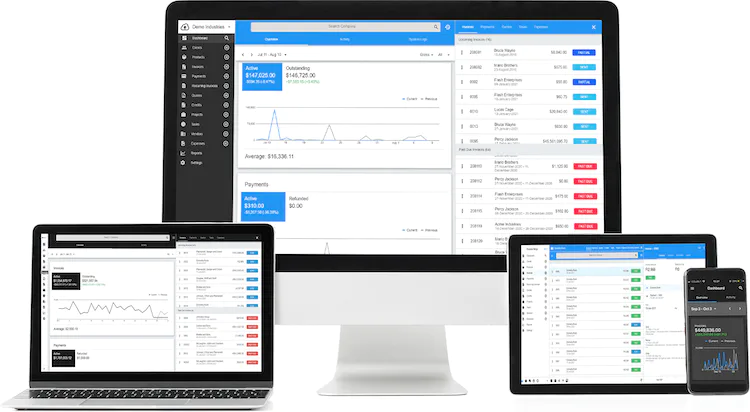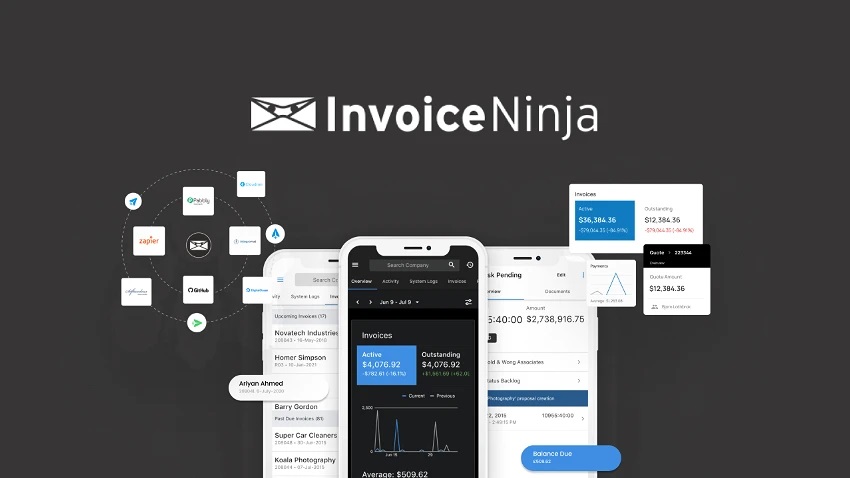Invoice Ninja, a powerful invoicing and billing software, offers a hidden gem known as Debug Mode.
Debug Mode is your secret weapon for troubleshooting and optimizing your invoicing process.
In this article, we’ll unlock the potential of Debug Mode, helping you diagnose and resolve issues with ease.
Debug Mode could be your key to a smoother invoicing experience. Let’s confirm!
What is Debug Mode in the context of Invoice Ninja?
Debug Mode is a feature in Invoice Ninja that provides additional information on why the system may not respond or behave as expected.
By default, the .env variable that controls Debug Mode is set to FALSE.
Debug Mode should only be used to get additional information on system issues and not for any other reason.
Purpose of Debug Mode in Software
Debug Mode is a tool used in software development to identify and resolve issues in the code.
It provides detailed system behavior information, including error messages, warnings, and other diagnostic information.
Debug Mode is used to identify and fix issues in the code, ensuring that the software runs smoothly and efficiently.
Why and When to Use Debug Mode in Invoice Ninja
You should use Debug Mode in Invoice Ninja when you encounter issues with the system.
These could include:
1. Error messages when creating or editing invoices.
2. Unexpected behavior when generating reports.
3. Issues with payment processing.
Debug Mode provides additional information on the issue, allowing you to diagnose and resolve the problem.
You should only use Debug Mode for this purpose.
Debug Mode should be turned off once the issue has been resolved to prevent any security concerns.
If you encounter issues turning off Debug Mode, there are resources available to help troubleshoot the issue.
Enabling Debug Mode in Invoice Ninja
Before enabling Debug Mode in Invoice Ninja, ensure that you have the following prerequisites:
1. Access to the server where Invoice Ninja is installed.
2. Knowledge of how to edit the .env file.
To enable Debug Mode in Invoice Ninja, follow these steps:
1. Log in to the server where Invoice Ninja is installed.
2. Navigate to the root directory of your Invoice Ninja installation.
3. Locate the .env file and open it in a text editor.
4. Find the line that reads “APP_DEBUG=false” and change it to “APP_DEBUG=true”.
5. Save the changes to the .env file.
6. Clear the cache by running the following command in the terminal: “php artisan optimize:clear”.
7. Refresh the page where you encountered the issue to see the additional information provided by Debug Mode.
Debug Mode in .env file
Debugging Capabilities
Debug Mode in Invoice Ninja provides several debugging features and tools that can help identify and resolve issues.
These features include:
Error messages: Debug Mode provides detailed error messages that can help identify the source of the problem.
Stack traces: Debug Mode provides stack traces that show the sequence of function calls that led to the error.
Logging: Debug Mode allows you to log messages to a file, which can help you track the flow of your application and identify issues.
Breakpoints: Debug Mode allows you to set breakpoints in your code, which can help you stop the execution of your application at a specific point and examine the state of your application.
These debugging features can help pinpoint and fix issues in Invoice Ninja by providing additional information on the system’s behavior.
For example, if you encounter an error message when trying to create an invoice, Debug Mode can provide additional information on the source of the problem, such as a missing field or incorrect data.
Tips and Best Practices for Using Debug Mode
Debug Mode is a powerful tool that can help diagnose issues with your Invoice Ninja installation.
To use Debug Mode effectively, it is important to follow these best practices:
Create backups before making changes: Before making any changes to your Invoice Ninja installation, create a backup of your data.
This will ensure that you can restore your system to its previous state if anything goes wrong.
Document issues and solutions: Document any issues you encounter and the solutions you use to resolve them.
This will help you troubleshoot similar issues in the future and ensure that you can quickly resolve any problems that arise.
Use Debug Mode only for its intended purpose: Debug Mode should only be used to get additional information on system issues and not for any other reason.
Leaving Debug Mode on in a production environment can be a security concern. This is because it can allow attackers to gain valuable information about the application and its environment.
Turn off Debug Mode after resolving the issue: Once you have resolved the issue, turn off Debug Mode to prevent any security concerns.
Remember, as I mentioned above, if you encounter issues turning off Debug Mode, there are resources available to help troubleshoot the issue.
Debug Mode Security in Invoice Ninja
It is of crucial importance to emphasize the security aspect of Debug Mode.
You should never leave Debug Mode enabled in a production environment due to potential security risks.
Here are some reasons why Debug Mode can be a security concern:
1. Debug Mode can expose sensitive information such as file paths, database credentials, and other configuration details.
2. It can create unintended entry points or expose sensitive information to unauthorized actors with debugging code still enabled or active.
3. Also, it’s possible to use Debug Mode to bypass authentication and gain unauthorized access to the application or system.
To mitigate these security concerns, it is recommended to disable Debug Mode in production environments and implement proper access controls and permissions.
Disable Debug Mode: Disable the Debug Mode feature in production environments to prevent sensitive information from being logged or stored.
Implement Proper Access Controls: Ensure that only authorized users can access Debug Mode by implementing proper access controls and permissions.
Use Secure Logging Methods: Implement secure logging methods that ensure the confidentiality and integrity of the logged data.
Minimize the Use of Debugging Tools: Minimize the use of debugging tools in production environments and ensure that they are only used by authorized users.
Henceforth, users can use Debug Mode effectively and ensure that their invoicing system runs smoothly and securely.
Advanced Debugging Techniques
Experienced Invoice Ninja users can leverage advanced debugging techniques to diagnose and fix complex issues.
Some of the advanced debugging techniques include:
Inspecting Error Logs: Error logs can provide valuable information on the source of the problem.
By inspecting error logs, you can identify the specific error message and the sequence of function calls that led to the error.
You can find Error logs in the “storage/logs” directory of your Invoice Ninja installation.
Customizing Debugging Settings: It is possible to customize debugging settings to provide more detailed information on the system’s behavior.
For example, you can set the “APP_LOG_LEVEL” variable in the “.env” file to “debug” to enable detailed logging.
Using Additional Tools: Also, use additional tools such as Xdebug and Blackfire to diagnose and resolve complex issues.
Xdebug is a PHP extension that provides advanced debugging features such as stack traces and variable inspection.
Blackfire is a profiling tool that you can use to identify performance bottlenecks in your application.
Debug Mode and Customization in Invoice Ninja
Debug Mode can be useful for users who have customized their Invoice Ninja installation.
Customization can include custom templates, add-ons, or other modifications to the system.
Debug Mode can help identify and fix issues with these customizations by providing additional information on the system’s behavior.
For example, if you have customized your Invoice Ninja installation with a custom template and encounter an issue with the template, Debug Mode can provide additional information on the source of the problem.
By inspecting error logs and customizing debugging settings, you can identify the specific error message and the sequence of function calls that led to the error.
Conclusion
Invoice Ninja’s Debug Mode is your ally in troubleshooting and optimizing your invoicing process.
By enabling Debug Mode when needed, you gain the power to diagnose and resolve issues effectively.
Embrace it as a dynamic tool for efficiency, ensuring a seamless invoicing experience.
With Debug Mode, challenges become opportunities for growth and improvement, leading to more precise financial operations.






